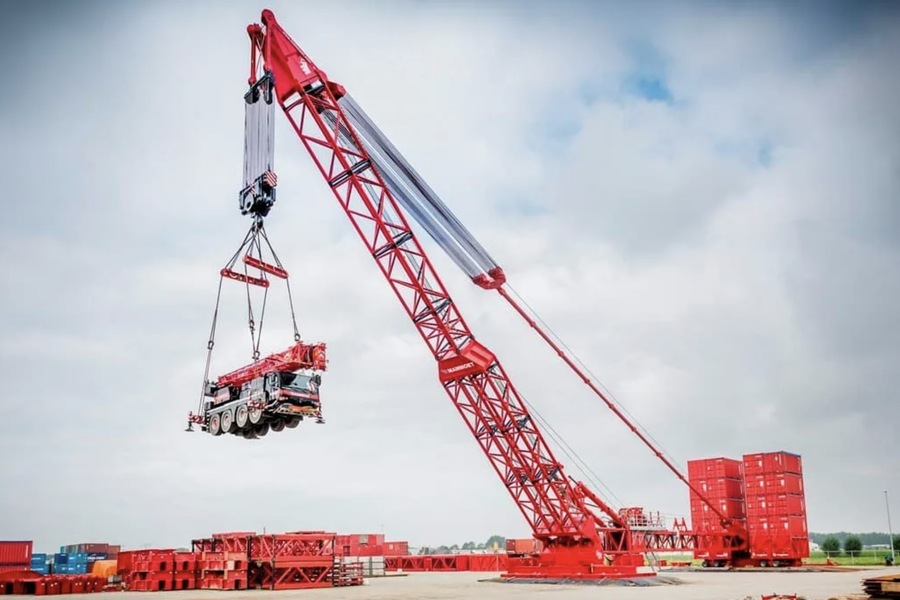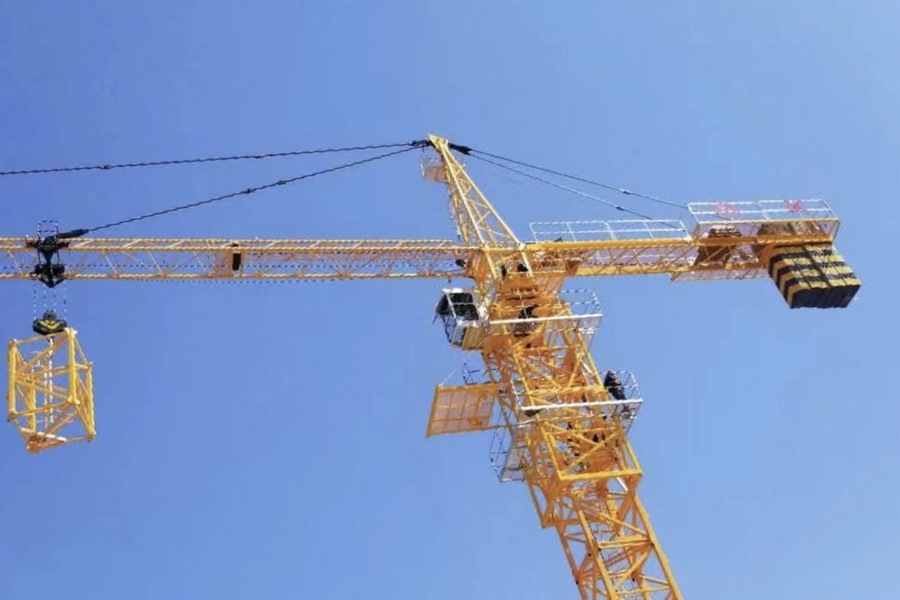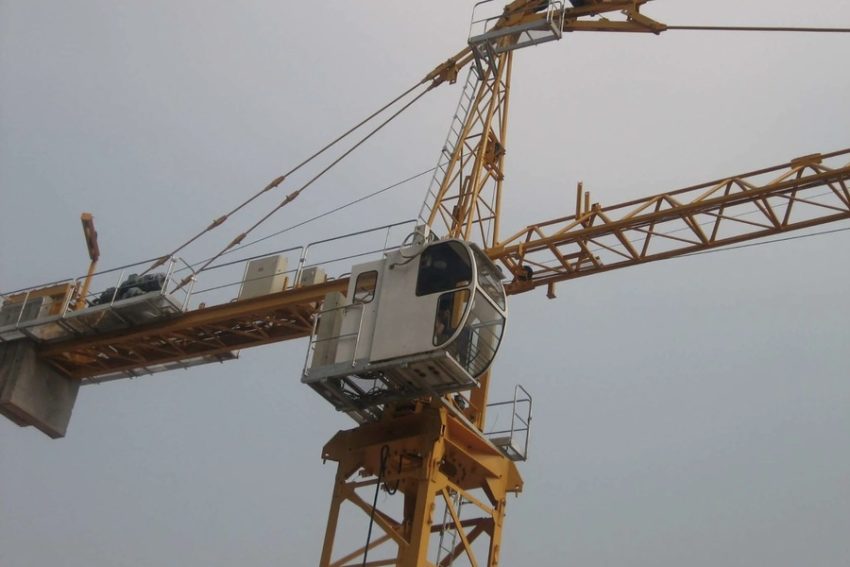Stationary cranes are an essential category of special equipment used in various industrial enterprises, where they play a crucial role in handling heavy and oversized loads. Unlike mobile cranes commonly found at construction sites, stationary cranes are fixed in place and are designed for lifting and moving heavy materials within a confined area. These cranes are highly versatile and can be customized to meet the specific needs of different industrial operations. When it comes to construction equipment cranes UAE, stationary cranes stand out for their precision and stability in industrial settings. This article delves into the various types of stationary cranes, their applications, advantages, and disadvantages, as well as highlights some of the leading global manufacturers of this equipment.
Types of Stationary Cranes
Stationary cranes come in different designs, each suited to a specific type of load handling. The most commonly used types include mast cranes, cable cranes, gantry cranes, cantilever cranes, and tower cranes. Here’s a detailed breakdown of each type:
Mast Cranes
Mast cranes are designed to lift super-heavy blocks and structures to great heights, making them ideal for confined spaces. They are often used in scenarios where precision and strength are needed to install heavy equipment. However, their use in general construction is limited due to their specialized design, but they excel in industrial settings where heavy lifting is required.
Key Features:
– Used to lift super-heavy structures.
– Excellent for confined spaces.
– Ideal for installing heavy equipment at significant heights.
Cable Cranes
Cable cranes are designed to move loads across long distances, often within large industrial complexes. They are commonly used in scenarios that require the transportation of materials over wide areas, such as servicing large construction zones or industrial facilities.
Key Features:
– Capable of moving loads over long distances.
– Suitable for large construction sites or industrial complexes.
– Often used in material handling in expansive spaces.
Gantry Cranes
Gantry cranes are highly versatile and can be used for various tasks, including lifting, moving, and installing massive equipment. They are commonly employed in industries such as shipbuilding, hydroelectric power plant servicing, and large-scale assembly operations.
Key Features:
– Ideal for handling massive equipment or large objects.
– Commonly used in warehouses and shipbuilding.
– Suitable for handling containers, timber, and prefabricated structures.

Applications of Stationary Cranes
The applications of stationary cranes vary depending on their type, but they are most commonly found in industrial workshops and large-scale operations that require handling heavy or oversized materials.
Mast Cranes
Mast cranes are often used in scenarios where heavy equipment needs to be installed at great heights in confined spaces. This type of crane is especially useful in industries like manufacturing, where space is limited, and precise lifting is essential.
Cable Cranes
Cable cranes are frequently used to move heavy materials over long distances, making them ideal for servicing large industrial complexes. These cranes are often employed in the construction of bridges, dams, and other infrastructure projects that require the transportation of materials over a wide area.
Gantry Cranes
Gantry cranes are versatile and can be used in various industrial applications, such as handling piece goods, containers, and timber in warehouses. They are also widely used in shipbuilding, where they assist in the assembly of large ship sections, as well as in hydroelectric power plants.
Design and Operation of Stationary Cranes
The design of stationary cranes can vary significantly depending on their type. The two most notable designs are cantilever cranes and tower cranes.
Cantilever Cranes
Cantilever cranes consist of a vertical column, which serves as the primary support for the crane. A bracket with a boom is attached to the column, and a stop is installed at the end of the boom to limit the movement of the hoist along the console. The boom can be rotated manually or through a motorized drive, allowing for flexibility in load handling.
Key Design Features:
– Vertical column and boom structure.
– Rotation of the boom provides flexibility.
– Ideal for tasks requiring a fixed crane in a limited space.
Tower Cranes
Tower cranes are one of the most commonly used stationary cranes in construction and industrial applications. These cranes feature a steel frame made of either lattice or solid tubular structures. The lattice design allows for modifications in the lifting capacity and hook reach by adjusting the metal framework.
Key Design Features:
– Steel lattice or solid tubular frame.
– Adjustable lifting capacity.
– Widely used in construction and industrial projects.
Operating Principles of Stationary Cranes
The basic operating principle of stationary cranes is to move loads by adjusting the reach and height of the boom. The primary steps in operating these cranes include:
- Load Grabbing: The crane’s hook or other grabbing mechanism attaches to the load.
- Lifting and Moving: The load is lifted and transported to the desired location.
- Lowering: The load is lowered to the appropriate position.
- Detaching the Load: The crane releases the load once it is securely in place.
- Returning to the Working Position: The crane resets its position to repeat the process.
In some cases, such as with tower cranes, a counterweight system is employed to stabilize the crane and prevent overturning during operation.
Advantages of Stationary Cranes
Stationary cranes offer several benefits, making them a preferred choice in many industrial operations:
– Adaptability: Stationary cranes can be tailored to meet the specific needs of an industrial operation, including custom load capacities and equipment configurations.
– Space Efficiency: These cranes can be installed in confined spaces, such as walls or columns, making them suitable for locations with limited room for large equipment.
– Simplicity: The simple design of stationary cranes makes them economical and easier to operate compared to more complex mobile cranes.
– Load Versatility: Stationary cranes can handle a wide range of load types, especially when equipped with different hoists and trolleys.
– Fast Load Movement: These cranes can efficiently move loads when safety protocols are followed, reducing material handling times.
– Minimal Vibration and Noise: Stationary cranes tend to generate less noise and vibration, making them suitable for sensitive industrial environments.

Disadvantages of Stationary Cranes
Despite their numerous advantages, stationary cranes do have some limitations:
– Lack of Mobility: Being fixed in place, stationary cranes cannot be moved to different locations, limiting their flexibility compared to mobile cranes.
– Complex Transportation: Due to their large size and complex design, moving stationary cranes requires disassembly, which can reduce their lifespan and increase maintenance costs.
– Maintenance Requirements: Maintaining the stability and alignment of the crane’s rail tracks is essential, and any misalignment can cause operational issues.
Leading Global Manufacturers of Stationary Cranes
Several companies are at the forefront of manufacturing stationary cranes, each offering specialized equipment for various industrial applications:
- XCMG: A leading Chinese manufacturer of construction equipment, XCMG produces a wide range of stationary cranes for industrial use.
- Zoomlion: Another major Chinese company, Zoomlion manufactures equipment for industries such as construction, mechanical engineering, and agriculture.
- Liebherr: A Swiss engineering company, Liebherr is known for its high-quality cranes, including stationary cranes used in industrial and construction applications.
- Cargotec: Cargotec, through its subsidiaries MacGregor, Hiab, and Kalmar, provides specialized equipment for various environments, including ports and industrial complexes.
Conclusion
Stationary cranes play an essential role in industrial operations where heavy lifting and precise load handling are required. With a variety of designs suited to different applications, these cranes are indispensable in industries such as shipbuilding, manufacturing, and large-scale construction. Despite their lack of mobility, stationary cranes offer several advantages, including adaptability, space efficiency, and ease of use, making them a cost-effective solution for handling heavy loads. As industrial needs continue to evolve, leading manufacturers like XCMG, Zoomlion, Liebherr, and Cargotec remain at the forefront of crane technology, providing innovative and reliable solutions for a wide range of industrial applications.

I am an administrative assistant with eight years of experience in the executive team of a Fortune 500 company.
